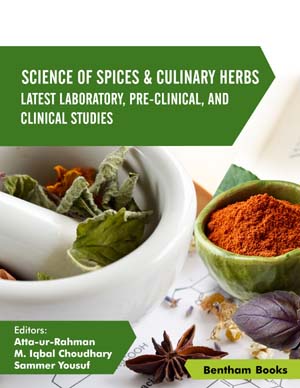Abstract
Flax (Linum usitatissimum), from the family Linaceae, is a blue blossoming yearly spice that produces shorts seeds fluctuating from golden yellow to ruddy earthy colored shading. Flaxseed has a fresh surface and nutty taste. Flaxseed oil is believed to bring mental and physical perseverance by battling weariness and controlling the maturing procedure. Flaxseed is rich in dietary dissolvable and insoluble strands. Because of its high substance of lignans, it plays an important role in the reduction of joint inflammation, hypercholesterolemia, atherosclerosis, phytoestrogens malady, malignant growth, hypertension, diabetes, osteoporosis, and neurological issues. Flaxseed has also been reported to act as anti-arrhythmic, anti-atherogenic, and improving the vascular functions. Among the useful nourishments, flaxseed has risen as a potential utilitarian food containing alphalinolenic acid, lignans, great protein, and soluble fiber. Flaxseed cotyledons are the significant oil stockpiling tissues, containing 75% of the seed oil. Flaxseed oil contains 98% triacylglycerol, phospholipids, and 0.1% free unsaturated fats. Flaxseeds also contain a decent measure of phenolic mixes. It fills in a decent amount of minerals particularly, phosphorous (650 mg/100 g), magnesium (350–431 mg/100 g), calcium (236–250 mg/100 g), and has an exceptionally low measure of sodium (27 mg/100 g). It is also associated with the supplementation of Omega-3 polyunsaturated fatty acids. Flaxseeds have various biological and pharmacological effects like anti-diabetic, cancer reducing effects, hypocholesterolemic and cardiovascular diseases, prevention of kidney diseases, prevention and treatment of obesity, irritable bowel syndrome antithrombotic, etc.
Different clinical preliminaries revealed that flaxseed constituents give infection preventive and restorative advantages. More in vivo examinations are required to determine the medical advantages of flaxseed constituents. To know its remedial potential for all populace, including pregnant and lactating ladies and to realize potential issues associated with its overdose, a study needs to be carried out. There is a requirement for the advancement of fast, reproducible, and financial procedures for the examination of nutraceuticals from flaxseed.
Cleaning the flaxseed ought to be viewed as a significant advance in decreasing the microbial tallies. Impacts of cleaning flaxseed on microbial burdens including aerobic plate counts (APCs), mold counts (MCs) yeast counts (YCs), coliform counts (CCs), Escherichia coli counts, and Enterobacteriaceae counts (ECs) were resolved. Flaxseeds contain enemies of supplements that may have an antagonistic impact on the wellbeing and prosperity of the human populace.Cyanogenic glycosides are the significant enemies of supplements in the digestive system. cyanogenic glycosides discharge hydrogen cyanide, a powerful respiratory inhibitor, by intestinal β-glycosidase that produces thiocyanates. Thiocyanates meddle with iodine take-up by the thyroid organ and create iodine-insufficiency issues, goiter, and cretinism. In this survey, supplements, useful properties, digestion, and medical advantages of bioactive particles viz., basic unsaturated fats, lignans, and dietary fiber of flaxseed will be discussed.
Keywords: Anti-nutrients, Anti-oxidants, Anti-arrhythmic, Anti-atherogenic and anti-inflammatory agent, Dietary fibers, Flaxseed, Flax (Linum usitassimum), Functional food, Lineaceae.




















